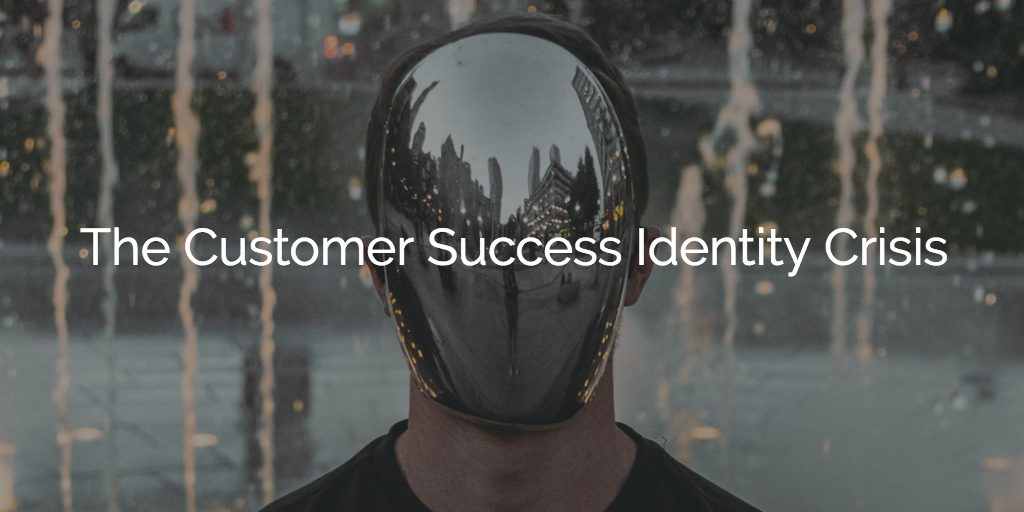I have watched the rise of Customer Success as a philosophy, a discipline, and a function with great interest and excitement over the years.
The idea that the key to retaining and growing your customers was connecting the use of your product to attainment of their business objectives or measurable business value was brilliant. And the supporting idea that the customer needed to have an advocate for them within your organization was as romantic a job as one might hope for in a for-profit business. I also spent a lot of time listening to and interacting with many genuine thought leaders in Customer Success: people that could clearly articulate the original idea of CS, point to specific examples of how they had implemented a successful CS model, and explain how they innovated and scaled it over time.
But, all is not well in CS land. While the discipline is maturing and scaling in some organizations, it is also flailing and failing in others.
One has to ask: Has the hype about CS peaked? Are we about to enter the trough of disillusionment? To that second question, I answer both No and Yes. Let me explain.
In my opinion, the problem started when companies and leaders started to embrace the idea of Customer Success, but misunderstood it and incorrectly implemented it within their organization. It got worse as Customer Success evolved into a buzzword and every Post-Sales team in software rebranded without altering their actual job description or approach to customer management. And finally, the problem was further fueled by the injection of massive amounts of venture capital into Silicon Valley’s software companies, who used that capital to hire masses of “Customer Success Managers” without any consideration to the operating model or cost model for that team, all in the belief that “having CSMs lowers churn.”
What we are on the verge of, as a result, is a CS identity crisis. And over the coming years, the pretenders are going to get separated from the contenders.
Here are some “Customer Success” models that are failing. I obviously deliberately put CS in quotes to point to the fact that none of these things actually align with the original and correct idea of CS:
- White Glove: Using CSMs as a white-glove model to over-service your customers and scaling CSM headcount linearly with logos.
- Churn Mitigator: Hiring “CSMs” to fix churn, only to discover that the issue lies somewhere else (oversold, product gaps, etc.) and having to reassess CSM spend.
- Cover Band: Renaming traditional roles like Customer Support or Professional Services to CSM just to be part of the CS revolution.
- Venture Funded: Having no financial plan to tie CS spend to impact on Annual Recurring Revenue (ARR), retention, and growth, and no plan to have customers fund high-value services.
- Generalist: Having a “CSM” team that is responsible for everything (onboarding, training, support, NPS) and accountable for nothing.
And, here are the attributes of the only Customer Success model that will survive:
- Retention & Growth Driven: ARR, retention, and growth will be (and already are in the best-run CS teams) the ultimate measure for the function and all other inputs like successful onboarding, NPS, adoption etc. will ladder up to the primary measures and be centrally owned by one team and executive.
- Business Value & ROI Focused: The business case or ROI model used to justify the software purchase will be tied directly to the customer’s success criteria for realization of value, attainment of which will be the sole objective of the CS team.
- Financially Sound: People and services that support the customer will be structured and funded properly to deliver healthy gross margins, services profitability, and retention rates. Fundamentally, post-sales headcount will either need to be funded by the customer and fall under a Profit & Loss or be funded by expansion quotas and be treated as a Sales & Marketing expense.
- Scalable: The organization will scale using people, process, and technology—not just headcount. Self-service content, playbooks, communities, summits, training classes, and automated communication will complement the people-based expertise provided by the organization.
- Board Level Accountability: The aforementioned retention and growth metrics will have board-level accountability and the executive in-charge will be empowered by the board and CEO to align the company’s resources to maximize ARR growth.
And what about the masses of CSMs that were hired over the past 5+ years? From what I can tell, one of two dominant skill sets will prevail in a great CSM. Those folks that have not developed one or both of these skills will need to close that skill gap to evolve to the next level (or dare I say, survive?):
- Consulting: The ability to be prescriptive about the best way to use the software to achieve business outcomes (not usage).
- Commercial: The ability to engage with a customer’s C-level decision makers and other key influencers to engage in commercial discussions to renew or grow the partnership.
I do think the flaw here is that so many startups hire entry-level people into junior CSM roles and then fail to develop their skill set down either of the paths listed above, which results in several of these folks hitting a growth barrier at some point in their careers. Ideally, my hope for CS is that it will develop both these skills in equal parts as it evolves over time.
So, in closing, is CS about to enter the trough of disillusionment? Now you know why I said both, No and Yes. No because Customer Success is the real deal and here to stay. Yes because if your Customer Success strategy and approach doesn’t align with the true and original mission of Customer Success, you’re toast.

